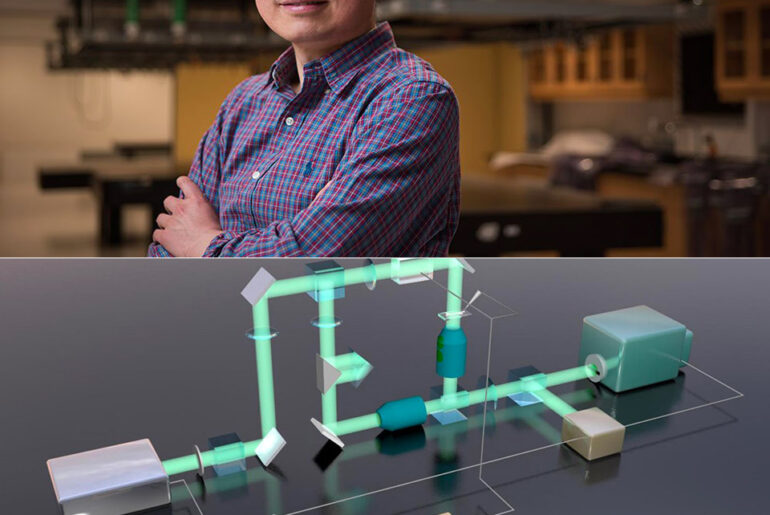
A high-speed camera can be used for many things, but Caltech scientists have developed one capable of capturing signals traveling through nerve cells as well as other ultra fast phenomena including electromagnetic pulses. This camera technology, called differentially enhanced compressed ultrafast photography (Diff-CUP), uses a Mach–Zehnder interferometer to first image objects and materials by first splitting a beam of laser light in two before recombining them.
Since light waves are affected by the objects they pass through, with different materials affecting them in multiple ways, the beam going through them being imaged will have its waves set out of sync with the waves of the other beam. When these beams are recombined, the out-of-sync waves interfere with each other in patterns that reveal information about the object being captured.
- 35G & THUMB SIZED: Insta360 GO 3 is a mini action camera weighing in at only 35g. Take this small cam and film anywhere!
- HANDS-FREE POV: Capture effortless, hands-free POV videos or creative angles at 2.7K with this tiny action camera. Perfect for mountain biking, pets,...
- MOUNT ANYWHERE: A versatile magnetic design with a set of handy accessories such as the Magnet Pendant and Easy Clip, GO 3 gives you endless creative...
Seeing nerve signals is fundamental to our scientific understanding but has not yet been achieved owing to the lack of speed and sensitivity provided by existing imaging methods Imaging propagating signals in peripheral nerves is the first step. It’d be important to image live traffic in a central nervous system, which would shed light on how the brain works,” said Lihong Wang, Bren Professor of Medical Engineering and Electrical Engineering.





